Space
10 powerful telescopes that will change our view of the world
Published
1 year agoon


10 powerful telescopes that will change our view of the world . By building powerful space telescopes, man was able to find his place in the universe and realize its extent. With the development of huge telescopes, we will find out more about the secrets of existence.
10 powerful telescopes that will change our view of the world
With super telescopes making our understanding of the universe even greater, we are in for a very exciting time. We will be able to watch the formation of planets around young stars, take a look at the earliest ages of the universe, search the atmospheres of exoplanets for signs of life, and maybe finally discover the secret of dark matter and dark energy and realize their role in the universe. Most likely, along the way, unexpected observations and discoveries will surprise us.
Supertelescopes are technological masterpieces and without access to the levels of technology available in the world today, the construction of these instruments would not be possible; In fact, the development of super telescopes has led to the advancement of technology. The emergence of these instruments is rooted in Galileo’s simple observations using a two-inch telescope and his curiosity about nature. Although Galileo is not the inventor of the telescope, his name is associated with the first telescopes and he was the first person to use a telescope to see the night sky and thus discover the Milky Way.
There are several types of telescopes in the world that are used to observe different types of electromagnetic radiation. For example, optical, radio, and X-ray telescopes have all in turn contributed to the advancement of science. Space telescopes help humans to observe and study stars and galaxies from a closer distance. This human invention receives visible light from distant objects and uses that light to create an image. This functionality is exactly what makes telescopes so useful to scientists and astronomers.
Large, unknown, and mysterious galaxies have always occupied the minds of humans and mankind has been able to discover many of these mysteries with the advancement of science and the construction of more equipment. Every day, science becomes more advanced, and as a result, new discoveries occur in this field. In the following, we will mention 10 of these telescopes. Be with Zoomit.
1. Spherical telescope with 500-meter aperture (FAST)


The FAST radio telescope, which is the first option among the powerful telescopes is the world’s largest single-dish radio telescope, is nearing the end of its experimental phase. Like optical telescopes that absorb visible light and concentrate it in a point so that it is possible to analyze the received images, radio telescopes also collect and concentrate weak radio waves so that they can be analyzed. Scientists use radio telescopes to study stars, galaxies, black holes, and other cosmic objects and phenomena.
China TV had previously announced that the FAST telescope has detected 99 rotating neutron stars known as pulsars. Fast radio bursts (FRBs) are short but powerful pulses of energy that originate in the far reaches of the universe. The first of them was detected in 2007, and more signals have been discovered since then. Although astronomers have made exciting progress in tracking fast radio bursts in recent years, we don’t really know much about their nature.
Maybe black holes or neutron stars known as magnetars play a major role in their production. The powerful receiver on the FAST telescope has a high sensitivity to radio signals and covers the frequency range of 1.05 to 1.45 GHz. The more we observe these fast radio bursts, the better our chances of identifying their true nature and source. Some speculate that fast radio bursts are caused by the decay of the shells of certain types of neutron stars. According to McLaughlin, the FAST telescope will also be used in an international collaboration to detect gravitational waves.
The International Pulsar Timing Array uses radio telescopes around the world to observe regular bursts of pulsars and detect low-frequency entanglements in these transient gravitational waves. Unlike the Arecibo telescope, which has a fixed spherical curvature, the FAST radio telescope is able to form a parabolic mirror. Such a feature makes the researchers master more degrees.
Although the diameter of the new dish of the world’s largest radio telescope is 500 meters, the FAST telescope can observe the sky overhead with an effective size of 300 meters from the dish with angular turbulence of ±40 degrees, the sensitivity of this dish is 10 times that of the Arecibo telescope in Puerto Rico. This $180 million telescope will be used for research in the field of gravitational waves, pulses, and signs of life in space. The construction of the FAST telescope was not without controversy and the Chinese government relocated 9,000 residents of the telescope site to create suitable conditions for the operation of the telescope and gave the residents approximately $1,800 in subsidies for new houses.
The plan to build the FAST radio telescope was first presented in 1994 until the National Development and Reform Commission of China approved the final project plan in 2007. Currently, the 65-meter Parkes Telescope in Australia is among the telescopes used to search for extraterrestrial life and can detect signals up to 4.5 light-years away. Arecibo can also detect signals up to 18 light-years away, but this figure reaches 28 light-years for Fast. Extensive researches on neutral hydrogen and timing array of pulsars and the discovery of interstellar molecules are also other research goals of FAST.
2. Large Synoptic Survey Telescope (LSST)
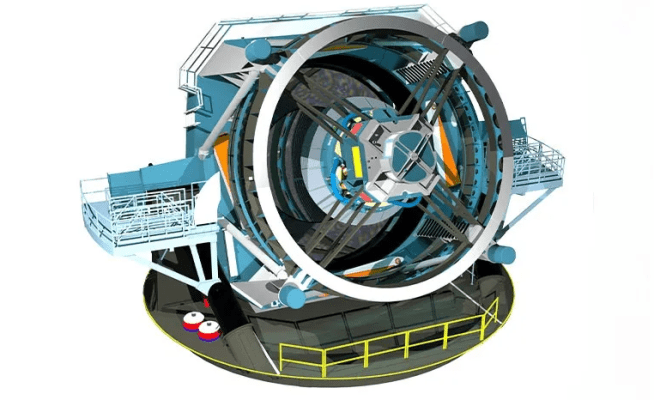

The LSST telescope, is another one of the powerful telescopes which is equipped with a 3200-megapixel camera, will be called the world’s largest digital camera after it is built, and thanks to it, scientists will be able to reach the mysterious parts of the universe. It is said that this camera can detect the dark energy that has accelerated the development process of the world. The LST telescope is supposed to be used to scan the entire night sky several times a week for ten years.
In addition to imaging the supernova from a great distance, the LST telescope will also be able to detect asteroids close to Earth. This telescope, which is the result of the cooperation of American and Chilean public and private organizations, will reveal unprecedented details about the universe and will help to unveil great mysteries. LST proves that big mirrors aren’t the only thing that makes a powerful telescope.
The LST telescope has a diameter of about 8.4 meters, which is still very large, but this large size is compensated by its field of view and speed. As a survey telescope, the LST telescope is designed to scan the entire night sky instead of focusing on individual targets, using the largest digital camera on Earth to produce color and time-lapse movies of the night sky every few nights. The LST telescope will be built on the 2,682-meter peak of Cerro Pachon in northern Chile, where the Jiminy South telescope is now located. According to the manufacturer, the US Department of Energy and the National Science Foundation are working on this telescope. The LSST telescope camera adds new capabilities to the quality of astronomical imaging.
The LSST telescope provides unprecedented 3D maps of the night sky that can help us study dark energy. The operation of this telescope is planned for 2022, and this is the first time that a telescope will observe more galaxies than there are humans on Earth. It is said that this technology detects tens of billions of celestial objects; The LST telescope camera is the size of a small car and weighs more than three tons.
The LST camera provides full images in such resolution that 1,500 high-definition television screens are required to display just one of them. This telescope is considered the most powerful sky mapping tool that can survey a wide area of the sky.
Charles Simoni, the former CEO of Microsoft, who traveled twice to the International Space Station (ISS) as a space tourist, has donated $20 million and Bill Gates has donated $10 million to the project to build the mirror. The unique open field of view of this telescope can survey a large part of the sky in a short time and take more than 800 panoramic images every night. This camera covers the entire sky twice a week, and with the high power and precision of this new telescope, asteroids with a width of 140 meters can be found in the asteroid belt at a high speed. One of the goals of this telescope is to examine and classify asteroids in the Kuiper belt, and the asteroid belt, and investigate the possibility of their collision with the Earth.
3. Thirty-Meter Telescope (TMT)
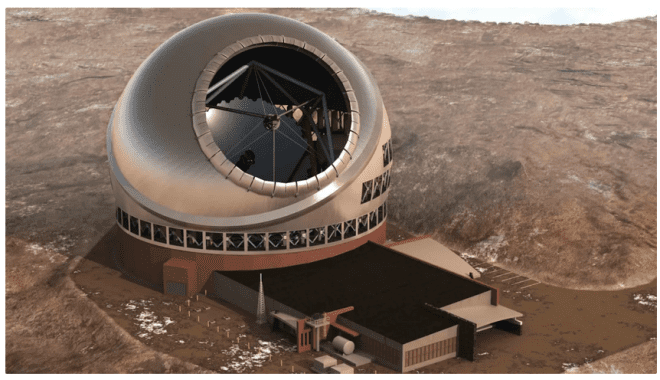

Thirty-Meter Telescope is the third option among the other powerful telescopes. After a long debate between the native inhabitants of the island of Hawaii and the officials of the international organization, about the location of the construction of an extremely large telescope, the court finally decided to build a space telescope. The island of Hawaii is an extremely attractive area for astronomers, but the indiscriminate construction of various space telescopes has caused the anger and discomfort of the natives of this oceanic island. According to experts, this telescope will be the largest terrestrial telescope in the northern hemisphere. The construction of the 30-meter observatory, which will be one of the largest telescopes in the 2020s, is a costly project of 1.4 billion dollars, and the diameter of the primary mirror of this telescope is 30 meters.
The TMT telescope can image the sky in ultraviolet, visible, and infrared wavelengths, and according to the officials of this project, the resolution of the 30-meter telescope will be 12 times that of the Hubble space telescope. However, the TMT and other giant ground-based telescopes cannot replace space telescopes such as Hubble or replace NASA’s James Webb Space Telescope. Space telescopes will find the targets, and ground-based telescopes will examine their details.
The TMT telescope will join the twin Keck telescopes between 2025 and 2030. Scientists from the University of California and the California Institute of Technology began designing this telescope, which eventually led to the design and development of a 30-meter telescope that consists of 492 mirror pieces and will be 9 times more powerful than the Keck telescope.
Due to the high power of gathering light and optimizing the observation conditions that exist in the high points of Maunakea, the TMT telescope enables scientists to carry out research that is impossible with today’s instruments. This telescope is designed to observe ultraviolet and mid-infrared rays (0.31 to 28 microns of wavelength). The TMT telescope will be at the highest altitude of any very large telescope and will receive government grants from countries such as China, Japan, India, and Canada.
The TMT telescope will be built with the cooperation of research teams from different countries of the world, including the International Organization of TMT Observatory led by the University of California, California Institute of Technology, and the countries of Japan, China, India, and Canada. The engineers of the international organization of this observatory have announced that if the plan to build this telescope in Hawaii is not operational, they will build TMT in the Canary Islands. Researchers hope to be able to obtain unique information about space by launching this ultra-advanced telescope.
Using its unique telescope and mirror, astronomers can somehow travel in time and study space for the past 13 billion years and obtain new information about the formation of the universe and the formation of the solar system and the Milky Way galaxy. Protesting the environmental damage to the island of Hawaii, native residents are planning to implement a plan to dismantle five ground telescopes that were previously built in valuable areas of the island and restore the biological cover of the area to its original state after the destruction of the telescopes.
4. Very Large Telescope (ELT)
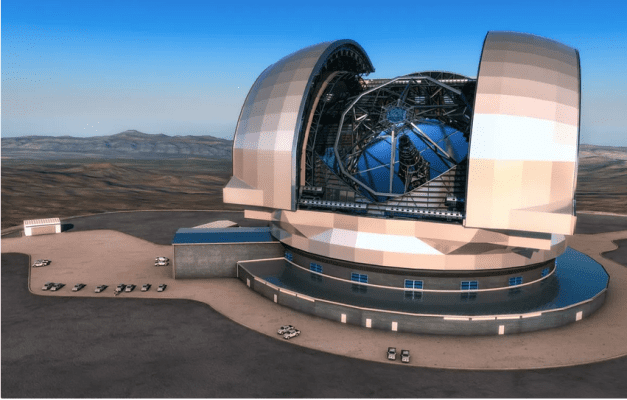

ELT is another option among the rest of powerful telescopes. The location of this telescope was chosen due to the high percentage of cloudless nights and little light pollution, and the green light was given to its construction in 2014. Since then, the construction of this large telescope is expected to last nearly a decade, and the ELT telescope in 2024 is still in the process of completing this project. The LT telescope is built in the mountains of Chile because the high altitude and low humidity make it a good choice for telescope construction.
The Chilean mountains were selected in 2010, and in 2011 the Chilean government donated the land for the base while pledging to keep the 362-square-kilometer area free of buildings so as not to interfere with the telescope’s observations. According to Alfredo Moreno, Chile’s foreign minister, Chile has the clearest skies on Earth and hosts the most important centers for astronomical observations. The ELT will be the largest optical and infrared telescope in the world when it is launched.
The LT telescope will consist of a 39-meter main mirror, which itself is made of 798 individual hexagonal pieces. The size of each piece will be 1.4 meters and its thickness will be five centimeters. In total, all the pieces collect tens of millions of times more light than the human eye can collect. Initial plans for the LT telescope included a 42-meter segmental mirror and a 5.9-meter secondary mirror. In 2011, the European Southern Observatory decided to reduce the size to 39.3 meters for the primary mirror and 4.2 meters for the secondary mirror in order to reduce the cost and finish the preparation of the telescope faster. The main mirror of this giant telescope allows it to advance science in groundbreaking ways, observe exoplanets, introduce us to other galaxies, and improve our understanding of fundamental physics.
The ELT telescope observes giant planets around young stars and in star-forming regions that have evolved over time. ELT will answer our fundamental questions about the formation and evolution of planets and the conditions of planets in other stars, and will also be able to peer into the hearts of galaxies and count their stars. Currently, astronomers can only observe individual stars in our galaxy and their nearest neighbors, none of which are elliptical galaxies. The stellar population of a galaxy represents the entire star formation history of that galaxy, and deciphering this information provides detailed insight into the galaxy’s past.
The ELT telescope also goes back to the end of the “Dark Ages,” when galaxies formed after the Big Bang, to identify some of the early galaxies and their characteristics. According to ESO’s website, the Very Large Telescope is recognized worldwide as one of the highest priorities in astronomy.
The Very Large Telescope will greatly advance the knowledge of astrophysics, enabling detailed studies of topics such as planets around other stars, the first objects in the universe, supermassive black holes, the nature and distribution of dark matter, and dark energy that dominates the universe. The telescope will also be able to see more distant galaxies, surveying hundreds of massive galaxies in the farthest reaches, providing scientists with information about their ages, stellar masses, stellar radiation, metallicities, and more.
One of the most exciting aspects of the Very Large Telescope’s science program is the discovery and characterization of planets and protoplanetary systems around stars. The LT telescope should be able to detect Earth-like masses and also directly image larger planets and determine the properties of their atmospheres. This telescope will make giant planets visible around young stars and in star-forming regions, they will follow their evolution over time. As mentioned, ELT will be located in Cerro Amazonis mountain in Chile; Because of its high altitude and low humidity, it is a suitable place for a telescope.
5. Keck telescope
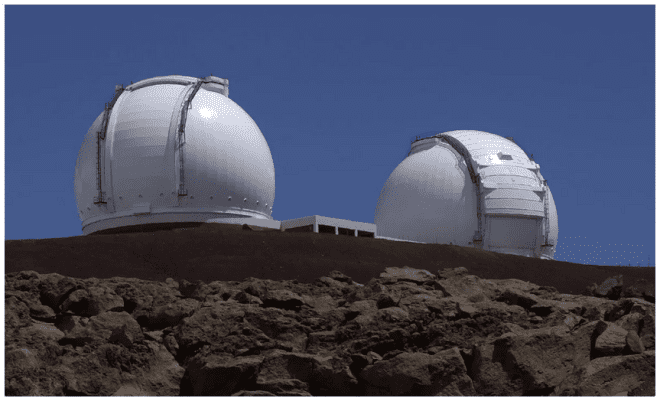

Keck is the fifthe option in the list of powerful telescopes. The Keck telescope is located at the Mauna Kea Observatory in Hawaii, USA, and its construction was completed in 1993. Today, the Keck Observatory is supported by public funding and philanthropic donations. The collection is administered by the California Society for Research in Astrophysics, and its board of directors includes representatives from the California Institute of Technology and the University of California, with ties from NASA and the Keck Foundation.
Keck 1 and Keck 2 telescopes were opened in 1993 and 1996, respectively, and both telescopes have a diameter of 10 meters. The mirror of each of the telescopes consists of connecting 36 hexagonal optical sections that work together as a large 10-meter mirror. The University of California and the Lawrence Berkeley Laboratory began to design these two telescopes in 1977, but it was Howard B. Keck who donated the $70 million needed for construction and development to the owners of the project and thus made his name. also immortalized in the history of space science.
Construction of Coke 1 began in 1985, but the project’s popularity quickly grew and more funding was received, eventually allowing the construction of Coke 2. The University of California, Caltech, and NASA are working together to accept research proposals and allocate time to use the telescope. The California Astronomical Research Society also operates this observatory. The location of Keck telescope is one of the best observation sites in the world.
The stable air that reaches the 4,200-meter peak of Manakia after traveling thousands of kilometers over the ocean creates a clear sky and excellent visibility in this observation site. Keck telescopes also use an adaptive optics system that eliminates the destructive effect of the atmosphere on astronomical images. The massive Keck mirrors that gather and focus light, like those in the SALT telescope, are a series of smaller mirrors that form a perfect curve.
Keck telescopes have internal cooling systems that prevent the mirrors from bending due to thermal effects, but one of the most important parts of this system is a small mirror that happens to be bent. Even atop Manakea, the Keck telescopes have to deal with turbulence from the Earth’s gaseous atmosphere, which is the greatest enemy of ground-based telescopes. In each of these telescopes, there is a 15 cm mirror that changes its shape 670 times per second to neutralize the effect of the Earth’s atmosphere on the light.
The compensation system for atmospheric turbulence is called the adaptive optics system. Keck telescopes are reflecting telescopes, each of which has a diameter of about 10 meters, and the type of installation of these telescopes is side-height type, which gives the telescope the necessary balance. Large computers with advanced analysis have precisely determined that the maximum strength and stiffness required to use the least amount of steel is about 270 tons for each telescope. This work is very important not only for economic reasons but also to prevent telescopes from deforming because a large telescope must resist deformation caused by gravity while following the path of a star in the night sky.
The dome type of both Keck telescopes is spherical and the volume of each dome is more than 700,000 cubic feet. An internal cooler protects the insulated dome from temperature changes that could deform mirrors or steel, and a giant air conditioner runs continuously to keep the dome temperature at or below zero.
6. Large Magellan Telescope (GMT)
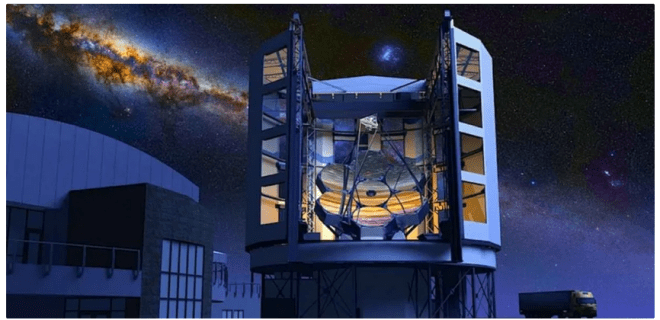

GMT is the sixth option in the list of powerful telescopes. The next generation of ground-based telescopes is slowly arriving, and in the mid-2020s several giant telescopes are set to gaze into the sky for the first time. The Magellan telescope is one of these telescopes that is being prepared for its location in Chile. The Magellan telescope will consist of seven main mirrors, which together will form a mirror with a diameter of 24.5 meters. The diameter of the mirror of the largest current telescope is about ten meters, and so far only one mirror of this telescope has been fully prepared.
The mirrors of the Magellan telescope are made at the University of Arizona, and there is no other way to transport the mirrors to Chile except by ship. The Magellan telescope will help scientists in various fields of astronomy; From examining the atmospheres of nearby exoplanets and searching for signs of life in them to examining how the first galaxies formed and collecting information that may help solve the mystery of dark matter and dark energy.
Magellan telescope will probably start its work in 2028 with four or five mirrors. According to the officials of the project, with the preparation of four or five mirrors, headquarters, a dome, and a number of scientific instruments the Magellan Observatory will begin to operate. This work will make the necessary engineering studies and experiments to be done before the telescope starts its main work. Finally, the telescope will probably observe the sky in 2028 with all its power.
According to one of the officials of Magellan Construction, the structure of this telescope consists of a thousand tons of steel, which is located inside a rotating chamber with a height of 22 meters and a width of 56 meters. Also, to provide better visibility, Magellan is equipped with mirrors that weigh nearly 20 tons each. Magellan’s mirrors collect more light than any other telescope ever built. According to the official Large Magellan Telescope website, this advanced view of the cosmos could play a key role in answering some of the most important questions in modern astronomy.
Some of the most important questions include how galaxies formed, the nature of dark matter, and dark energy, and how stars formed after the Big Bang. Perhaps this telescope will help astronomers answer the questions that come to mind when looking across the sky: Are we alone in this universe? How big is the universe?
7. Infrared Open Field Mapping Telescope (WFIRST)


WFIRST is the seventh option in the list of powerful telescopes. The WFIRST telescope has successfully passed initial checks, meaning the telescope has been approved for performance, planning, and budget. This telescope was first introduced in 2010 by the National Academy of Sciences, Engineering, and Medicine by astronomers as a priority. However, the progress of its project was very slow due to the skyrocketing costs of the James Webb Space Telescope, although this delay had a good side.
In 2012, the US National Reconnaissance Office (NRO) gave NASA a pair of 2.4m mirrors built for spy satellites. These mirrors were larger than previously designed for WFirst, but design studies showed that a new mirror would not need to be cut and a larger observatory could be built at no additional cost. The size of the primary mirror of this telescope is equal to that of Hubble, but its imaging power is 100 times higher than that of Hubble. Like the Spitzer and James Webb space telescopes, this telescope will operate in the infrared part of the electromagnetic spectrum, which is invisible to the human eye. The Earth’s atmosphere also absorbs this light, and telescopes on the ground cannot see this part of the spectrum. Light from this mirror is transmitted to the spacecraft’s instruments, one of which is a large camera that produces images with an open field of view. This camera allows astronomers to map the dark matter in the universe.
Dark matter is only detectable through the gravitational effects it exerts on the observable matter of the universe. This camera will also help astronomers to study dark energy. This camera can be used to discover new exoplanets because it can sense smaller and more distant planets and finally we will know if our solar system is common or rare in the galaxy.
Another WFIRST instrument is Corona, which will directly observe the planet orbiting the star by blocking the light from the star. The results of this coronation have been very useful for observing and determining the characteristics of exoplanets, and it will carefully examine the planets that orbit their mother star at a distance of 3 to 10 times the Earth from the Sun.
The Wfirst telescope will search for these distant worlds with a method called gravitational micro convergence; In this method, the telescope examines the bending or magnification of the light of a distant star. This bending or magnification is the result of the gravitational influence of an exoplanet orbiting between the central star and the observing telescope. According to experts at NASA’s Jet Propulsion Laboratory (JPL), discovering the nature of dark energy is one of the main reasons for building the WFirst telescope.
With a better understanding of dark energy, mankind will have a better understanding of the past and future developments of the world. The observatory was originally designed to study dark energy, but new optics allow the telescope to image exoplanets directly. Of course, the telescope does this by using a chronograph, a mask that blocks the star’s light so that the planets around it can be seen. In addition, due to its wide field of view (100 times wider than Hubble), the telescope can measure the shape, location, and distance of millions of galaxies to gain a better understanding of matter and dark energy. Until recently, NASA officials did not expect the WFirst project to start so soon.
Later, the US Congress accelerated the progress of the project by allocating more funds to NASA. In the past years, Congress approved the allocation of 90 million dollars to WFirst, and it was decided that this project will go ahead at a high speed in early 2016. On February 17, NASA’s program management presented a plan to launch the observatory in mid-2020. The next step is to present an official plan and estimate the cost of World First, which seems to reach more than two billion dollars for this program.
8. Large Binocular Telescope (LBT)
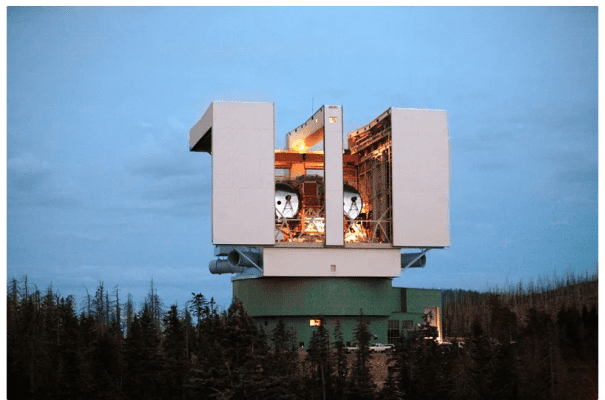

LBT is the eighth option in the list of powerful telescopes. Unlike most telescopes today, which contain a mirror to collect light, the Large Binocular Telescope consists of two 8.4-meter mirrors that help astronomers and other researchers observe the night sky from the Mount Graham Observatory in Arizona, USA. Unfortunately, the location of this telescope has been hotly debated and the San Carlos Apache tribe has strongly objected to its use on Mount Graham.
In fact, the natives of the region respect the mountains as a sacred place, and this issue had caused disputes. Of course, the San Carlos Apache tribe was not the only ones who objected to the construction of the LBT telescope, environmentalists were also concerned about the destruction of the native habitat of the Mount Graham red squirrel. It even got to the point where the United States Congress approved a plan that allowed the destruction of this telescope. The LBT telescope was the result of a joint effort between the Italian National Astronomical Institute, the University of Arizona, the University of Notre Dame, the University of Missouri, the University of Virginia, the Max Planck Institute for Astronomy in Germany, and others.
The LBT telescope has a binocular telescope that will allow astronomers to explore the universe in greater detail and at greater depths. The imaging power of the LBT telescope is about 10 times better and clearer than the images sent from the Hubble Space Telescope. About 120 million US dollars were spent to build the LBT telescope, and its implementation took about 20 years due to special problems in the design of optical parts and its construction. The University of Arizona manages this telescope.
Read More: What would happen if the Ryugu asteroid hits the Earth?
9. Atacama Large Millimeter Array (ALMA)
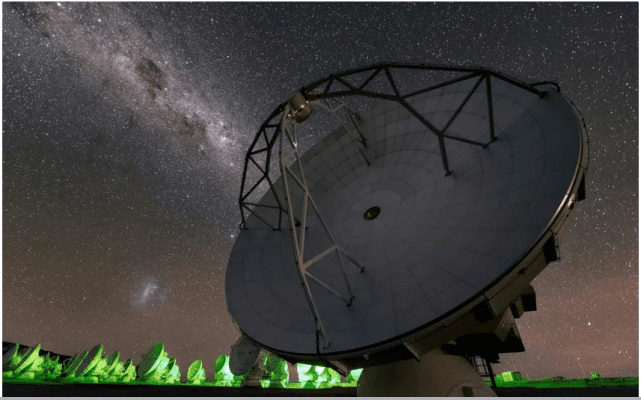

ALMA is the ninth option in the list of powerful telescopes. ALMA’s telescope array studies the universe at specific radio wavelengths and can probe many things that are difficult to see at visible wavelengths. Among these things, we can mention the planetary systems that are being created. ALMA also has the ability to observe some of the most distant and oldest galaxies in the universe. ALMA telescope can reveal celestial objects with high quality by using several receiving dishes. The telescope has high resolution at radio wavelengths, a capability that made the Hubble Space Telescope famous in the past.
According to ALMA’s website, each 50 antenna of the ALMA telescope array has a radius of 12 meters. The ALMA telescope has another compact array, which includes four antennas with a radius of 12 meters and 12 antennas with a radius of seven meters. ALMA was built in partnership with the European Southern Observatory, the US National Radio Astronomical Observatory, and the National Astronomical Observatory of Japan in cooperation with the Republic of Chile. The location of the ALMA telescope helps a lot to make observations; Some of its highest receivers are located at an altitude of 5,000 meters above sea level.
Astronomers are working at an altitude of 2,900 meters and if they are going to stay at this altitude for a while, they receive supplemental oxygen. Alma’s 66 antennas can be placed in many different configurations, side by side or far apart. Each telescope receives data individually and then sends it to a supercomputer that analyzes the data to identify the signal. This technology allows astronomers to investigate three fundamental questions: the nature of the first stars and galaxies in the universe, how planets and stars came together, and the chemical properties of the gas and dust clouds that eventually collapse to form planets and stars.
ALMA is a productive scientific observatory that has produced many important results. The first image from ALMA shows a composite view of the antenna collision galaxies, which are approximately 75 million light-years away from Earth. In 2014, ALMA examined the remnants of a supernova (1987A) and saw dust ejected from its region. In 2016, this telescope managed to measure the mass of a giant galaxy with the highest accuracy. This black hole, located in the center of the galaxy “NGC 1332”, has a mass equal to 66 million times the mass of the Sun. The astronomy team made this discovery by measuring the speed of rotation of the material that was swirling around this black hole.
10. James Webb Space Telescope (JWST)
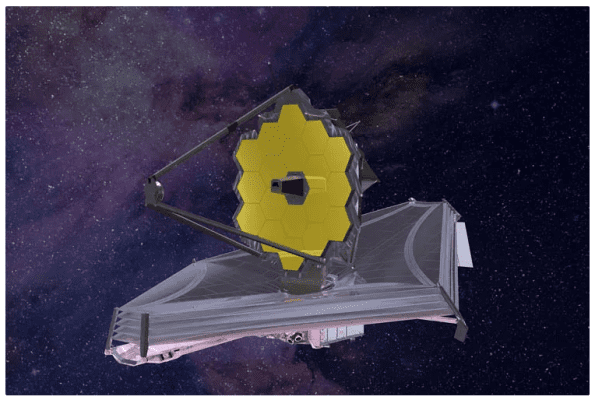

James Webb space telescope is the last option in the list of powerful telescopes. The development and construction of the JWST space telescope have faced delays since the project began in 1996, but a recent milestone has brought us closer to the final stage; This magnificent device is now fully assembled for the first time. Experts have announced that the James Webb space telescope is on the verge of final completion and sending into space.
This space telescope, the construction of which was one of the most challenging space projects, has been able to show good resistance to severe temperature fluctuations and tolerate the vacuum in space, and scientists hope that this telescope will be launched into space in 2021 as planned.
In the construction of the James Webb telescope, the most advanced technologies are used and it has mirrors connected to each other, which finally form a large mirror. Due to the special appearance of this telescope, placing it in a suitable space rocket that can carry the telescope is one of the challenges facing the scientists, that is why they considered a design for the telescope that changes in appearance in space, and in Its finally got its final shape. The James Webb telescope will observe the universe at slightly different and longer wavelengths; From visible to infrared wavelengths. Hubble’s capabilities range from the infrared to the infrared, so James Webb can observe farther distances to see objects at redshift (redshift), such as galaxies in the early universe, that were difficult for the Hubble telescope. Considering the importance of the James Webb space telescope from a scientific point of view, the efforts and expenses made can be considered quite valuable.
The James Webb Space Telescope will observe the sky at infrared wavelengths, giving astronomers the opportunity to answer some of the biggest questions in astronomy. The James Webb Space Telescope will be located 1.5 million kilometers from Earth.
Investigating the atmosphere of exoplanets and searching for signs of life in them and studying the formation of the first stars and galaxies in the universe are the main goals of the James Webb Space Telescope mission; A telescope that can make a big leap in astronomy and expand the boundaries of human knowledge. The team behind the James Webb telescope has announced that additional tests are still needed to ensure the telescope is working properly.
One of these tests involves exposing the telescope to extreme motion and shaking and simulating space in terms of cosmic rays so that scientists can ensure that the telescope is not damaged during launch. The James Webb Space Telescope testing process is underway in a laboratory in Houston. In this laboratory, the telescope will be subjected to vacuum simulation tests and exposure to heat and shock during launch. After the success of all the tests, the James Webb Space Telescope will be transferred to “Guiana” in France for launch, and from there it will be sent into space using the Ariane 5 rocket.
James Webb is on a mission at very cold operating temperatures to observe infrared wavelengths, so shielding and shielding the telescope’s equipment is critical, as thermal infrared radiation can interfere with the signal, hence the complex five-layer solar shield. , is used. The next step for the team is to fully deploy the solar shield. This sector faced problems in 2017; Several tears were observed in the aluminum and silicon-coated polyamide sheets, which were related to the work error.
The sun shield has been tested separately since 2017, just like all other components. Now the engineers’ goal is to see if the components perform as expected on the assembled telescope. According to web program manager Gregory Robinson, it’s an amazing time to see the results of the work; Web components are finally connected and assembled for the first time, the engineering team has taken a big step, and soon we can see new views of our amazing world.


You may like
-

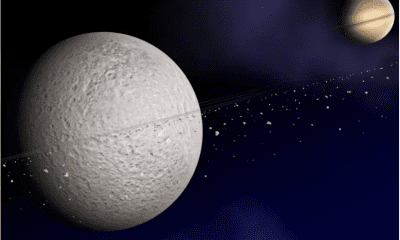


Why do none of the moons of the solar system have rings?
-

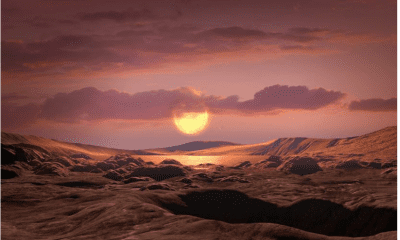


Most alien planets probably do not have day or night
-




The biography of Edwin Hubble
-

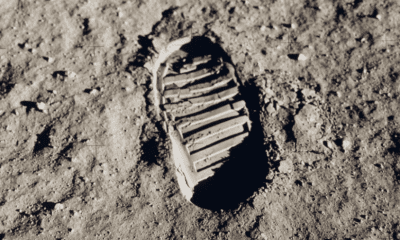


Can telescopes see astronaut footprints on the moon?
-




Can you really see the Great Wall of China from space?
-

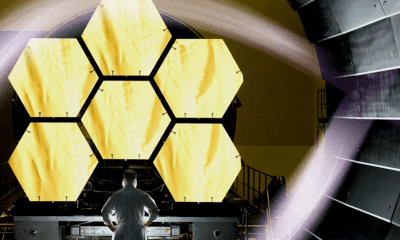


The James Webb Space Telescope; A look at the vastness of the universe


Why do none of the moons of the solar system have rings?
We have many strange moons in our solar system. hot and cold moons; Moons with liquids and dusty moons. One lunar planet is walnut-shaped and another is potato-shaped; But among almost 300 moons that have been discovered so far, not even one of them has rings. This is really strange.
Of the eight planets in the solar system, half have rings of dust and ice that orbit their equator. It is thought that Mars once had a ring, and according to new research, even our blue planet probably had a ring similar to Saturn’s ring about 500 million years ago, which lasted for tens of millions of years.
In addition, some dwarf planets also have rings; Although astronomers have not yet been able to understand how these rings are formed. Even some asteroids have their own rings.
While investigating the concept of ringed moons outside our solar system, Mario Socercchia, an astrophysicist at the Universidad Adolfo Ibánez in Chile, and his colleagues became involved in the question of why moons in our own cosmic neighborhood lack rings. In an interview with Science Alert, he explains:
If the giant planets of the solar system have rings, and if the asteroids beyond the orbit of Jupiter and the non-Neptunian bodies also have rings, why don’t the moons of the solar system have rings? This absence is illogical considering the presence of rings in other places. As a result, it is better to investigate whether there are underlying dynamical reasons that prevent the formation of rings or their long-term stability around moons.
 James Webb Space Telescope image of the rings of the planet Uranus.
James Webb Space Telescope image of the rings of the planet Uranus.
We have yet to definitively discover an extrasolar moon, but in 2021 Soserkia and his colleagues hypothesized that if a moon had a large ring system, it could engineer its existence by blocking enough starlight. But the group later realized that we have yet to see any ringed moons, so the likelihood of their existence is very low.
When you’re an astronomer with a question in mind and a simulation tool at hand, there’s only one thing you can do: build models of cosmic systems and see what happens when you set them in motion.
There are many raw materials from which rings can form around the moons of the solar system. Some of these materials are dust resulting from the formation of impact craters. Some other moons emit steam or gas of their own, so there seems to be no problem with ring formation.
Considering the gravitational influence of the moon, host planet and other moons, researchers designed and tested physical N simulations and realized that due to these variables, ring formation around moons is difficult.

For example, Saturn’s moon Enceladus releases water vapor, ice particles, and gases from its glaciers in the Antarctic region with its remarkable surface activity. However, instead of forming a ring around this moon, these materials are transported into Saturn’s orbit by strong interactions with neighboring moons, feeding Saturn’s E ring.
In other words, even though the moons produce part of the raw materials necessary for the ring, their surrounding environment makes a large part of these materials available to the host planet and prevents the formation of the ring around the moons themselves.
So far, NASA has discovered 293 moons in the orbit of the planets of the solar system, most of which belong to the planets Jupiter and Saturn. Also, moons around dwarf planets and even asteroids have been discovered.
Soserkia and his team simulated the moons of a variety of solar system objects, from the Earth’s moon to the larger moons of Jupiter and Saturn, over millions of years of evolution. They sought to investigate the stability of these objects, their gravitational environment, possible ring systems, and their changes over time. The results of the investigation were contrary to the expectations of the researchers. Susarkia explains about this:
At first I expected rings to be completely unstable, which directly answered our question. However, contrary to expectation, we found that these structures have maintained their stability in many conditions. Indeed, in a previous paper we showed that isolated moons can have stable rings, but we did not predict that moons would remain stable in harsh gravitational environments despite the large number of other moons and planets that have distributed their rings. Another surprise came when we realized that these harsh environments, instead of destroying the rings, beautified them by creating structures like cracks and waves, which were just like what we see in Saturn’s rings.
 Saturn’s moon Iapetus with its prominent equatorial ridge.
Saturn’s moon Iapetus with its prominent equatorial ridge.
Some features of the moons of the solar system are signs of the past of the rings. The simulations suggest that the pebbles found orbiting Saturn’s moon Rhea could be the last remnants of a complete ring system. Also, Saturn’s moon Iaptus has a equatorial groove, which could be the remnant of a ring that fell on this moon, and in this sense, it is just like Saturn’s rings that slowly fall on this gas giant.
The findings show that the reason we do not see rings in the solar system today is that we are not in the right time and place. Solar radiation pressure, magnetic fields, internal heating, and magnetospheric plasma all contribute to the loss of once-existing lunar rings. According to Susarkia:
I believe we are unlucky to some extent; Because we started observing the universe during a period when these structures no longer exist. After doing this research, I was convinced that these rings probably existed in the past.
On the other hand, the only reason we see Saturn’s rings is because we are in the right place and time. For this reason, we see solar and lunar eclipses; Because the moon is gradually moving away from the earth and at some point it will be so far that it can no longer completely cover the sun.
 The glory of Saturn’s rings.
The glory of Saturn’s rings.
The researchers believe that further simulations that take into account more parameters, such as beam pressure and magnetic fields, can help us understand the absence of lunar rings in more detail. We should also look more closely at the moons and look for evidence of the past, such as the craters on Iaptus.
At the same time, Suserkia and his colleagues are looking to expand their search and look for moons of rings around alien extrasolar worlds. He explains:
I wonder what mythical and epic stories we will hear from the inhabitants of other worlds about ringed moons. I mean, how will their stories and culture about the moons of the rings be different from our stories? There are infinite possibilities.
The scientists’ research has been accepted for publication in the Journal of Astronomy and Astrophysics and is available in the archive database.


Most alien planets probably do not have day or night
Do aliens sleep? You may take sleep for granted, but research suggests that many possible life-hosting planets may not have a day-night cycle. It is difficult to imagine the absence of day and night, but right now on Earth there are creatures living in lightless habitats in the depths or on the seabed, and they offer a vision of alien life without the existence of a circadian rhythm.
There are billions of potentially habitable planets in our galaxy; But how do we get to this number? The Milky Way has between 100 billion and 400 billion stars, seventy percent of which are cold and small red dwarf stars or M dwarfs.
According to a detailed survey of exoplanets in 2013, approximately 41% of red dwarf stars have a planet in their life belt. At this distance, the planet has the right temperature to support liquid water; Therefore, these planets have the potential to host liquid water.
We still do not know which of the discovered exoplanets have liquid water. However, 28.7 billion planets are only in the red dwarf life belt. We have not even considered the statistics of other types of stars like our sun.
 Planets close to red dwarfs are fatally locked to their star
Planets close to red dwarfs are fatally locked to their star
Rocky planets in the habitable belt of an M dwarf are called M Earths. M-Earths are fundamentally different from our Earth. One difference is that M dwarf stars are much cooler than our Sun. Also, M Earths are located at a close distance from their star, and for this reason, the gravitational influence of the star on them is strong.
The star’s gravity exerts a stronger force on the near side of the planet than on the far side. By creating friction, the planet’s rotation slows down until its orbital and translational rotations become synchronized over millions of years. Thus, M fields are likely to be deadlocked; So that one hemisphere of them is always facing the star and the other hemisphere is always behind it.
The year of a mortally locked planet is as long as its day. Earth’s moon also has a deadly lock on us. For this reason, we always see one side of it and cannot observe its hidden side.
A planet in mortal lock looks strange, But most possible habitable planets are of this type. Our nearest planetary neighbor, Proxima Centauri b, located in the Alpha Centauri system four light-years from Earth, is likely a fatally locked M-Earth.
As a result, unlike our Earth, M Earths have no day or night and even seasons; But terrestrial life, from bacteria to humans, has circadian rhythms corresponding to the day and night cycle. Sleep is one of the most obvious consequences of circadian rhythm.
On Earth, some creatures live in absolute darkness
The circadian cycle affects biochemistry, body temperature, cell regeneration, behavior, and much more. For example, people who are vaccinated in the morning produce more antibodies than people who are vaccinated in the afternoon; Because the response of the immune system is different during the day.
We cannot yet say with certainty how much periods of inactivity and regeneration affect life. Perhaps organisms that evolved without cyclical time never needed to rest.
If you doubt it, you can look at terrestrial organisms such as cave dwellers, deep sea life, and microscopic organisms in dark environments such as the earth’s crust and the human body that thrive in space away from daylight.
Many life forms have biological rhythms that are synchronized to stimuli other than light. Naked burrowing mice spend their entire lives underground and never see the sun, But their day and night hours are proportional to the daily and seasonal cycles of temperature and rainfall. Also, deep-sea bivalves and thermal well shrimps coordinate with ocean tides.
Bacteria that live in the human gut synchronize with melatonin fluctuations in the host’s body. Melatonin is a hormone in the body that is produced in response to darkness. Temperature changes that occur in thermal wells, humidity fluctuations chemical changes, and environmental currents can all cause biological fluctuations in the body of living organisms.
According to new research, M-Earths can have alternate cycles for days and seasons. To evaluate days and seasons on exoplanets, scientists have adapted climate models to simulate the environment of M-Earths and planets such as Proxima Centauri b.
According to the simulations, the contrast between the night and day sides of the planets produces gusts and atmospheric currents similar to Earth’s gust currents. If a planet has water, its dayside is likely to have thick thunderclouds.
The interaction between winds, atmospheric waves, and clouds can change the climate and produce regular cycles of temperature, humidity, and rainfall. The length of these cycles varies from hundreds to thousands of Earth days depending on the state of the planet, But it has nothing to do with the rotation period of the planet. Although the stars in the sky of these planets remain constant, the environment changes.
Perhaps life on M-Earths evolved to match biological rhythms and climatic cycles, or perhaps evolution arrived at a more exotic solution. One can imagine species that live on the day side of the planet going to the night side to rest and regenerate themselves.
These descriptions remind us that if life is out there, it can challenge assumptions we don’t know exist. The only certainty is that it will surprise us.


nameNoun: Any nounal word or phrase which indicates a particular person, place, class, or thing.
Noun: reputation.
Noun: An abusive or insulting epithet.
Noun: A person (or legal person).
Noun: Those of a certain name; a race; a family.
Noun: authority; behalf.
Noun: A unique identifier, generally a string of characters.
Noun: An investor in Lloyd’s of London bearing unlimited liability.
Verb: To give a name to.
Verb: To mention, specify.
Verb: To identify as relevant or important
Verb: To publicly implicate by name.
Verb: To disclose the name of.
Verb: To designate for a role.
Verb: To initiate a process to temporarily remove a member of parliament who is breaking the rules of conduct.
Noun: Any of several types of true yam () used in Caribbean Spanish cooking.
SProper noun: in which several of the axioms of ZF are derivable as theorems.
Noun: Any nounal word or phrase which indicates a particular person, place, class, or thing.
Noun: reputation.
Noun: An abusive or insulting epithet.
Noun: A person (or legal person).
Noun: Those of a certain name; a race; a family.
Noun: authority; behalf.
Noun: A unique identifier, generally a string of characters.
Noun: An investor in Lloyd’s of London bearing unlimited liability.
Verb: To give a name to.
Verb: To mention, specify.
Verb: To identify as relevant or important
Verb: To publicly implicate by name.
Verb: To disclose the name of.
Verb: To designate for a role.
Verb: To initiate a process to temporarily remove a member of parliament who is breaking the rules of conduct.
Noun: Any of several types of true yam () used in Caribbean Spanish cooking.
The biography of Edwin Hubble, the legendary astronomer who discovered the extragalactic space
Edwin Powell Hubble known as Edwin Hubble was a famous American astronomer who played an important role in formulating the basic principles of extragalactic and observational astronomy. Historians and astronomy experts consider him one of the most important astronomers in history. Hubble placed the space clouds, which before her time were known as gas and dust particles and were in the category of nebula or nebula, in the category of galaxies.. Historians consider Hubble’s discovery of other galaxies equal to Copernicus’ theory in terms of scientific value. Copernicus proved that the Earth is not at the center of the solar system, and Hubble proved that the Milky Way is not the center of the universe.
One of the important scientific relics of this astronomer is Hubble’s law in space. In short, this law states that the universe is expanding at a constant rate. In addition, in this law, the distance of each galaxy from the edge of the universe is directly proportional to its speed. Of course, this law was discovered two years before Hubble’s presentation by Georges Lemaitre, but its fame came to Hubble. The Hubble telescope is one of the most famous monuments built in the name of this legendary astronomer. An example of this telescope is installed in his hometown of Marshfield, Missouri. This telescope was sent into Earth orbit in 1990 to capture more detailed images of space outside the Milky Way.
Edwin Hubble has another great achievement in the field of cosmology and that is the classification of galaxies. This classification has been used by astronomers for many years. Hubble played a significant role in adding the astronomy category to the Nobel Prize. Of course, the sudden death of this scientist in 1953 prevented him from receiving this award.

Birth and education
Edwin Hubbell was born on November 20, 1889, in Marshfield, Missouri. His mother was Virginia Lee James and his father was John Powell Hubble. His father was a lawyer and insurance businessman. Edwin was the third child out of 8 children in this family. Of course, like many children of those years, some of Edwin’s siblings died in childhood.
Hubbell lived in a rich family that had to migrate many times because of his father’s work style. During these trips, which were generally in cities around Chicago and Illinois, they lived in luxurious houses with many servants. The children of the Hubble family were all brought up with work and responsibility; Because their parents believed that this style of upbringing would increase their sense of responsibility.
Edwin Hubble was very interested in sports as a child and teenager
As a child, Edwin struggled to keep up with his older siblings and students, so he learned to read before school. He was very fond of adventure books by Jules Verne and H. Rider Haggard. Edwin’s grandfather was an amateur but enthusiastic astronomer. At the age of 7, he got acquainted with one of his grandfather’s telescopes and had his first experience of space exploration. The interesting thing is that instead of participating in the celebration, he observed the space with this telescope on his 8th birthday.
Hubble completed his high school education at Wheaton High School near Chicago. He finished high school easily and with excellent grades in English, mathematics, biology, chemistry, physics, Latin, and German languages. Of course, in high school, Edwin was more into sports than studying, and he owed his high grades to his innate intelligence. On his father’s advice, he was busy delivering goods on holidays. Finally, Edwin Hubbell graduated from high school in 1906 at the age of 16 and received a scholarship to the University of Chicago. He worked at this university as a laboratory assistant of the famous physicist Robert Millikan (Nobel Prize winner).

Edwin Hubble (left), with friends after returning from Oxford
After entering the university, sports still occupied a large part of Hubble’s time. He was fond of sports such as basketball and boxing. He was a tall and strong person and he left several records during his university days. Edwin Hubble graduated from the university in 1910 with a bachelor’s degree in general science and honors in physics and astronomy.
After graduating from the University of Chicago, Hubbell entered Oxford University with a Rhodes scholarship and studied there for three years. Hubble was quickly influenced by English culture and changed many of his past behaviors and habits and adopted an English appearance. Contrary to his strong interest in experimental sciences and especially astronomy, he chose the field of law theory out of respect for his father and graduated from Oxford in 1912. He stayed at this university for another year and studied Spanish. While studying at Oxford, Hubble had another achievement including traveling around Europe. In these trips, in addition to having fun, he paid special attention to planning and thinking about his future. In those years, Edwin wrote in a letter to his mother:
Work is pleasant when it is for a great purpose and end. A goal so great that the thought of it and the anticipation of its achievements, will remove all the fatigue of the difficult task. When I find the purpose and principles I want, I leave everything for it and dedicate my life to it.
Edwin’s father died in the fall of 1912. He asked his father for permission to leave Oxford to visit him but was refused. Young Edwin remained in Oxford and his father died in January 1913.

Hubble exploring the cave
His Career
Hubble’s first job was teaching high school Spanish and physics.
Edwin Hubble returned to America in the summer of 1913. He was employed as a Spanish and Physics teacher at New Albany High School in Indiana. In addition, he coached the school’s basketball team and had a part-time job as a German translator. Although Hubble was a popular teacher, he did not enjoy his job. For this reason, he corresponded with Forrest Ray Moulton, professor of astronomy at the University of Chicago, and asked him for advice on collaborating on astronomy projects and higher education in this field. Moulton also introduced Hubble to Edwin Frost, director of the Yerkes Observatory in Wisconsin. In his letter, he introduced Hubble as a hardworking person, enthusiastic about science, and useful to Frost.
Finally, at the age of 24, Edwin entered the field of science, which he had become interested in nearly two decades ago by observing space through the lens of his grandfather’s telescope. Upon entering the observatory, he began his doctoral course in astronomy and received his degree in 1917 with a thesis entitled Photographic Investigations of Faint Nebulae. With the outbreak of World War I, Hubble served in the army for a year and rose to the rank of colonel despite not being actively involved in combat. He then went to Cambridge University to study astronomy.
Edwin Hubble started working at the Mount Wilson Observatory in California in 1919 at the age of 30. This observatory is famous for its excellent weather and excellent observation conditions. These factors made Hubble research in this place until the end of his life.

Hubble membership card in the army
Scientific achievements
As mentioned, Hubble wrote his doctoral dissertation on nebulae. He continued his research at Mount Wilson using the world’s largest telescope, the Hooker telescope. Hubble’s great discoveries, including galaxies beyond the Milky Way and the phenomenon of redshift, were the results of this astronomer’s research using the Hooker telescope.
In 1912, the American astronomer Henrietta Leavitt published an important discovery related to stars called the Cepheid variable. Beginning in the 1930s, Hubble was able to discover similar stars in nebulae using the Hooker telescope. While studying the Andromeda Nebula, he realized that these stars are very far from Earth and much farther than the stars of the Milky Way.
The discovery of other galaxies and the greatness of the universe was the greatest achievement of this scientist
Eventually, Hubble discovered that the Andromeda Nebula is actually a galaxy. Until then, most astronomers believed that the Milky Way and the Universe were a single entity. Hubble discovered that the universe is much larger than the Milky Way and consists of “island universes”. His findings in this historical discovery are summarized as follows:
- His high-quality images of Andromeda and the Triangulum Nebula showed a massive cluster of stars.
- Many of the stars were of the Cephasian type.
- The studied nebula is one million light years away from Earth. 4 times more than all the objects that had been discovered until that time. (Of course, this distance is proven to be equal to 2.5 million light-years today.)
- The diameter of the Andromeda Nebula is 30 thousand light years. (Today, these dimensions have been proven to be 220,000 light years.)
- Andromeda galaxy emits light equal to one billion suns of our system.
Hubble published his findings three days after his 35th birthday. Of course, his discoveries were not published in a scientific journal, but in the New York Times. The results of his research were debated among astronomers for some time, and finally, his paper was reviewed at the meeting of the American Astronomical Society on January 1, 1925. Hubble changed everyone’s view of the universe with his discoveries. He proved that our vast galaxy, host to the Sun and hundreds of billions of similar stars, is only one of the billions of galaxies in the universe.

Andromeda Galaxy
In addition to this discovery, Hubble provided a standard for classifying galaxies that was used by astronomers for years.
Redshift phenomenon
Prominent astronomer Veslu Slifer has also researched nebulae. He stated in his report in 1913 that the light of the nebula tends towards the red color of the color spectrum. He explained his discovery as a form of the Doppler effect. According to the same explanation, the light tends to the red side of the color spectrum as the emission source moves away, similar to the Doppler effect. To test his discovery, Slifer studied many nebulae. He came to the conclusion that the light of many of these nebulae has a fast transition towards red color and as a result, they are moving away from Earth at a high speed.
Hubble stated that galaxies are moving away from each other at high speed
In 1929, using Slifer’s findings and combining them with his own discoveries and his assistant Milton Humson’s, Hubble was able to find an explicable relationship between galaxy distance and redshift state. He recorded his findings in a formula known today as Hubble’s law. This formula is displayed as v = Hr, where v is the velocity, r is the distance, and H is Hubble’s constant. This constant was first named as 530 by Hubble, but today, using advanced research and tools, the exact number is 70.
The world is expanding
One of the main interpretations of Hubble’s law is that we live in an expanding universe. Of course, Hubble himself believed that there is not enough credible evidence to prove this interpretation of the redshift effect. The remarkable point is that although Hubble drew the attention of the scientific community to this law, the law was discovered two years earlier by Georges Lemaitre. In fact, Lemaitre’s interpretation of this law is more accepted by new cosmologists; Because he used Einstein’s law of relativity for his interpretation.
However, Hubble’s point of view was quite logical. He believed that the theory of red shift can only be accepted as a proof of the expansion of the universe when the density of matter in the universe is much higher than the amount discovered up to that time. These statements have been the basic foundations for the proof of dark matter in the universe. Hubble said about the density of materials needed to prove the effect of redshift:
The required density of matter is several times higher than the estimated maximum density of matter concentrated in the nebula. Furthermore, we have no evidence of significant interstellar matter increasing the density.

Classification of galaxies by Hubble
However, although Hubble had a lot of resistance to accept the effect of redshift, in his research he found that the speed of this expansion is slowing down. However, these findings and research on the speed of galaxy expansion are still ongoing and astronomers discover new issues every day.
One of the historical events regarding the theory of the expanding universe is Albert Einstein’s meeting with Edward Hubble in 1931. The two met at Mount Wilson Observatory. In 1917, in his theory of relativity, Einstein considered the universe to be constant and without change in size. He did not see any end or end to the universe. Although his research showed signs of the expansion of the universe, this scientist tried to deny it by determining a constant called the cosmic constant.
However, the January 1931 meeting earned Hubble the nickname of the man who forced the world’s smartest man to change his mind. This meeting caused Einstein to call his previous calculations the biggest mistake of his scientific life, and as a result, Hubble’s findings became the center of attention in scientific circles.
The Big Bang theory is influenced by the findings of this scientist about the expansion of the universe
In 1935, Hubble discovered the 1373 asteroid named Cincinnati. A year later he published the book ” The Realm of the Nebulae “. This book is a historical interpretation of his experiences and research on intergalactic astronomy. With the outbreak of World War II, Hubble once again served in the US Army at the Aberdeen Proving Ground. He was in charge of the ballistics research department in this area. His extensive research resulted in several improvements in the power of ballistic bombs and projectiles. One of his major practical achievements in this research was the improvement of ballistic projectile components, which resulted in a high-speed camera to study the characteristics of the bomb after launch. After the war, Hubble returned to Mount Wilson and spent some time at the Palomar Observatory in California.

Edwin Hubble in old age
In addition to scientific research, Edwin Hubble worked hard to convince the Nobel Prize Society to add astronomy to the award’s branches. He intended to add this science to this event as an independent subsection of physics. He believed that the efforts of astronomers in stellar physics should be appreciated. Unfortunately, after Hubble’s death, this society decided to appreciate this science as a branch of physics.
Personal life and death
Edwin Hubbell married Grace Burke Leib in 1924 at the age of 34 . They had no children. One of Hubble’s pastimes was collecting books. He was generally interested in books related to the history of science. In addition to scientific research, Hubble was also a member of the Board of Trustees of the Huntington Library in San Marino. The discovery of distant galaxies made him so famous that in 1948 his picture appeared on Time magazine. He and his wife had a close relationship with Hollywood stars and artists such as Aldous Huxley.
In 1949, at the age of 59, Edwin Hubbell suffered a heart attack while on vacation in Colorado and was nursed back to health by his wife. Of course, after this incident, the intensity of his research activities decreased until he died on September 28, 1953, due to a blood clot in the brain. He had willed that his burial place should not be known and personal notes were also destroyed by his wife. Grace also died in 1980 and was buried in a secret place next to her husband.
Awards and honors
The Cleveland Newcomb Prize was awarded to Edwin Hubble in 1924. In 1938, he was awarded the Bruce Medal, and a year later, he was awarded the Franklin Medal Science and Engineering Award by the Franklin Institute in Philadelphia. The Gold Medal of the British Royal Astronomical Society was awarded to this legendary astronomer in 1940. The Legion of Honor, which is a military award from the US Armed Forces, was awarded to him in 1946 for his research in the field of ballistics.

Hubble Space Telescope
After the death of Edwin Hubble, in addition to the aforementioned awards, other honors were also registered to pay tribute to this American scientist. The Missouri City Hall of Fame inducted Edwin Hubbell in 2003. In 2008, a commemorative stamp was printed in the name of this scientist, and in 2017, the Indiana Basketball Hall of Fame registered Hubble’s name.
Asteroid number 2069 and a hole in the moon are among the celestial objects that are registered in the name of this scientist. A planetarium at Edward R. Morrow High School in Brooklyn was also named after this scientist, and a street in Missouri was named after Edwin Hubble.
Certainly, the most famous monument of Edwin Hubble is the Hubble Space Telescope, which was launched in 1990. The main purpose of launching this telescope was to accurately calculate Hubble’s constant in his famous formula. Anyway, astronomers with this telescope first considered the number 72 as a constant in 2001, and then in 2006, by studying the microwave background of the galaxy, they reached the exact number 70. In addition, the Hubble telescope made it possible to observe not only the expansion of the universe but also the acceleration of this expansion. Today, the force that caused this expansion is called dark energy in scientific documents.


Why do none of the moons of the solar system have rings?


The biography of Andy Rubin, the creator of Android


How to prevent your location from being revealed through photos?


The chip battle of flagship phones in 2024; Which is the winner?


Do animals have an understanding of the concept of death?


How to use iMessage on Android?


Xiaomi Glorimi M2 Max watch review; Alternative economic option for iPhone owners


Why do we humans sleep?


What is the difference between the brain of athletes and the brain of normal people?


Artificial intelligence problems; Frauds based on artificial intelligence and methods to deal with them
Popular
-



 Technology1 year ago
Technology1 year agoWho has checked our Whatsapp profile viewed my Whatsapp August 2023
-



 Technology1 year ago
Technology1 year agoSecond WhatsApp , how to install and download dual WhatsApp August 2023
-



 Technology1 year ago
Technology1 year agoHow to use ChatGPT on Android and iOS
-



 AI2 years ago
AI2 years agoUber replaces human drivers with robots
-



 Technology1 year ago
Technology1 year agoThe best Android tablets 2023, buying guide
-



 Technology1 year ago
Technology1 year agoThe best photography cameras 2023, buying guide and price
-



 Humans2 years ago
Humans2 years agoCell Rover analyzes the inside of cells without destroying them
-



 Technology1 year ago
Technology1 year agoHow to prevent automatic download of applications on Samsung phones
